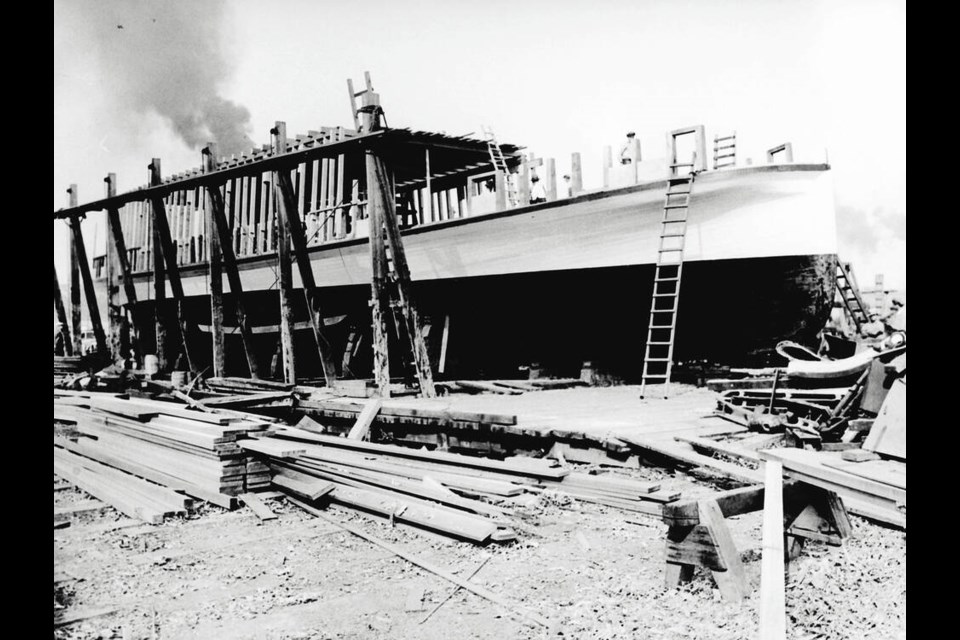Shipbuilding has been a big part of Victoria’s history, says maritime historian Denton Pendergast, curator of the Victoria Harbour History project.
It started with the gold rush, when Gov. James Douglas required all prospectors to register their claims in Victoria before heading to the gold fields via the Fraser River. “But, of course, there was very little transportation. So, the shipbuilding industry began and they started building steamboats,” Pendergast said.
The first vessel overhauled at the Collings and Cook’s Ways — the first shipyard on the Upper Harbour site that is now Point Hope — was the steamer Hope in 1874, a year after the business opened. Later that year, the shipyard got its first order to build a ship — the 123-foot sternwheeler Royal City, which was launched in March 1875.
Point Hope is now considered the oldest operating shipyard on Canada’s west coast. It operates on land that was at one time part of Songhees Village, established on the banks of the harbour in 1844.
In 1911, the Songhees succumbed to years of pressure to sell the land and the Songhees people were relocated to land east of Esquimalt Harbour.
The shipyard would undergo several name changes over the decades until it was named Point Hope by then owners Island Tug and Barge and Victoria Tug in 1938.
In 1917, the shipyard was leased by the Foundation Company, which built 24 steam-powered wooden cargo freighters that were up to 300 feet long.
Shipbuilding on the West Coast has boomed and gone bust over the decades, with shipyards buzzing as demand spiked for ships to be built for war, exploration and trade, then idling during the Great Depression and tough economic times.
At the height of the building boom during the Second World War, B.C.’s shipyards employed 25,000 people and manufactured 250 freighters, 15 frigates, three landing ships, 10 corvettes and 10 minesweepers.
By 1985, Point Hope was an employee-owned entity, after 30 workers came together to buy it from Seaspan. It would run until the mid-1990s, before it was forced to seek creditor protection.
In the late 1990s, John Sanderson, a former engineer and commercial fisherman, along with a small group of local businessmen, bought Point Hope out of bankruptcy.
“John Sanderson was a pivotal guy — he was really concerned about the loss of the harbour’s shipbuilding heritage,” said Pendergast, noting Sanderson was instrumental in establishing the Victoria Esquimalt Working Harbour Society.
In 2003, however, the shipyard again faced bankruptcy.
It was purchased by Ian Maxwell’s Ralmax Group of industrial companies. After millions were spent to upgrade, modernize and revamp the yard, Point Hope sprang to life and remains a thriving entity.
Pendergast said the shipyard is an important link to the city’s past, and is pivotal in understanding the city.
“The connection of the harbour to [Lower Johnson Street] and the whole of Wharf Street, the charm of Old Town is all a result of the shipbuilding in the harbour and transportation to and from the harbour,” he said. “All of those buildings were originally erected to service the harbour.”
Pendergast said Point Hope endures because it remains relevant.
“It’s hugely economically viable and a monument to a huge and vibrant shipbuilding and shipping industry here in Victoria,” he said.
• For more about the Victoria Harbour History project, go to victoriaharbourhistory.com.
>>> To comment on this article, write a letter to the editor: [email protected]

